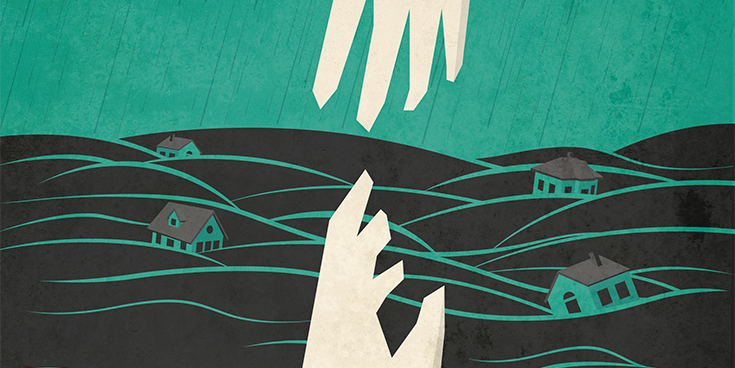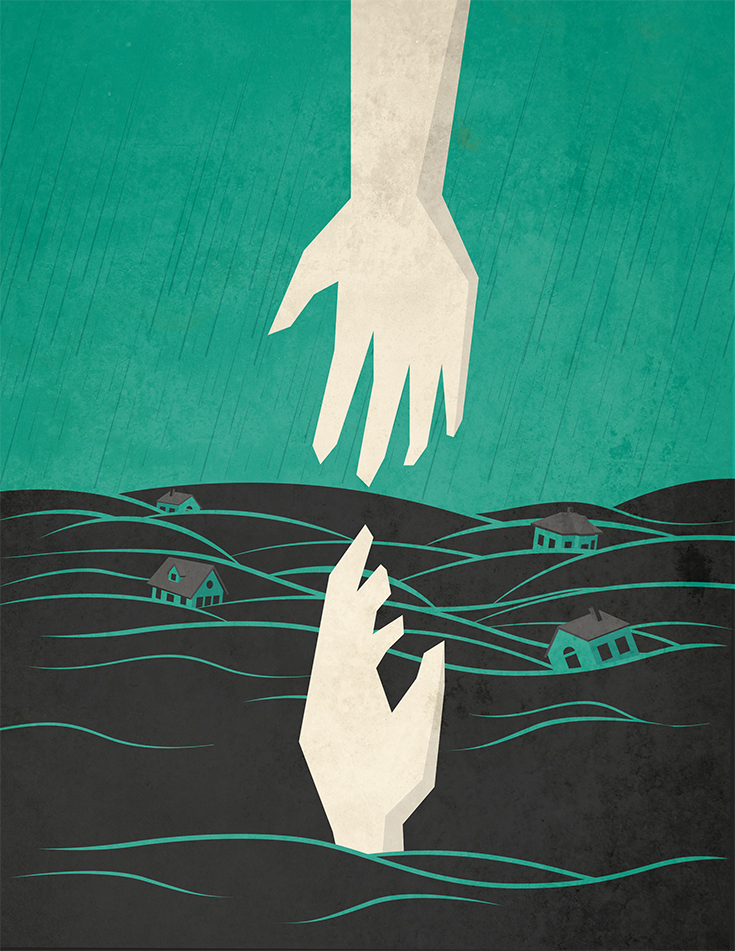From fierce hurricanes to deadly quakes, USNORTHCOM rises to the challenge
THE WATCH Staff
For many North Americans, the summer of 2017 was one better forgotten. Lightning-quick wildfires scorched more than 8 million acres of the American homeland — from the wilderness of Wyoming to the wine region of California. Deadly hurricanes battered Florida, Puerto Rico and Texas, leaving thousands homeless and without water or power. Add to that three deadly earthquakes in Mexico in a little more than two weeks, and the business of providing disaster relief proved logistically daunting.
That job — responding to each disaster by supporting civil authorities with manpower, gear and lifesaving supplies — fell to U.S. Northern Command (USNORTHCOM), the same military command responsible for protecting North America from attack. Whether the command was flying fuel, food and Soldiers to far-flung places such as Key West and Puerto Rico or sending search-and-rescue teams to hunt for survivors in the rubble of Mexico City, USNORTHCOM relied on years of planning and lessons learned from Hurricane Katrina to meet the challenges.
“We’ve come a long way since Hurricane Katrina, and we’ve learned a lot from Superstorm Sandy [in 2012],” Lt. Gen. Reynold N. Hoover, deputy commander of USNORTHCOM, said at the Gen. Bernard W. Rogers Strategic Issues Forum hosted by the Association of the U.S. Army’s Institute of Land Warfare in April 2017.
DISASTER RELIEF PLAYBOOK
Americans devastated by the barrage of disasters in 2017 received relief more quickly in many cases, thanks to those lessons learned in 2005, when USNORTHCOM was in its infancy and Katrina battered the U.S. Gulf Coast. The command, which turned 15 years old in 2017, has fully integrated its relief efforts into “playbooks” developed with the Federal Emergency Management Agency (FEMA). The playbooks script mission assignments and resource coordination.
They simulate scenarios ranging from an earthquake and tsunami on the West Coast to the detonation of an improvised nuclear device on the East Coast. “With this playbook, we know what FEMA’s going to ask for in the first minutes of the operation,” Hoover said in a story on the Army institute’s website. He emphasized that all disasters are “inherently local” and that USNORTHCOM’s role is not to assume command in a crisis but to support governors, state emergency managers, local officials, FEMA and other federal agencies.
No mock scenario, however, forecast exactly what happened in 2017.
TAKING IT TO THE LIMIT
The scope of the disasters was jaw-dropping. Hurricane Harvey, which poured up to 152 centimeters of rain in some parts of Southeast Texas and resulted in more than 80 deaths, made landfall as a Category 4 hurricane on August 25, 2017.
Texas Gov. Greg Abbott estimated the damage to his state could hit U.S. $180 billion, making Harvey one of the most destructive storms in U.S. history. More than 210,700 homes were damaged or destroyed, The Associated Press (AP) reported, and saving the lives of the people trying to escape rising water required precise coordination and as much hardware as USNORTHCOM, headquartered at Peterson Air Force Base in Colorado Springs, Colorado, could muster.
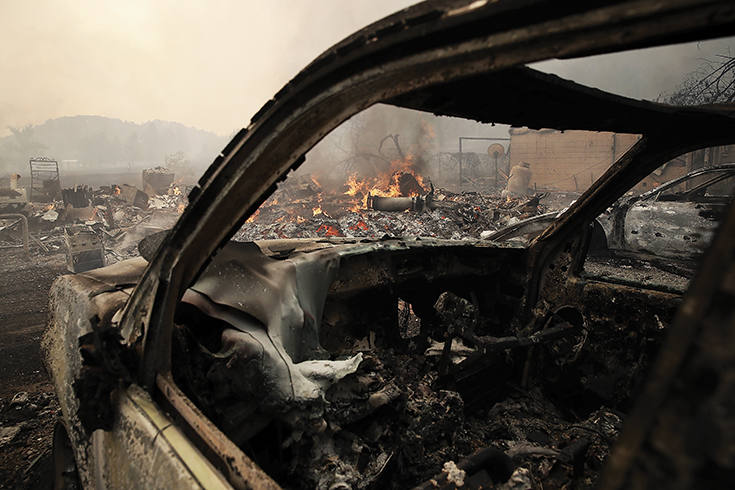
State and federal agencies conducted more than 122,300 rescues and evacuations. Those included more than 34,000 by the Texas National Guard and other state military forces and more than 11,000 by the U.S. Coast Guard. In Houston, police performed 5,000 water rescues, AP reported, and USNORTHCOM rescued more than 3,000.
To respond more efficiently, USNORTHCOM prepositioned resources. In less than a week after Harvey’s landfall, the command had already deployed 73 helicopters, three C-130 transport planes and eight teams to conduct search-and-rescue missions and evacuations. The command worked with the Defense Logistics Agency, which by August 31, 2017, had delivered 600,000 gallons of fuel to military bases in Texas and 45,000 gallons of aviation fuel to enable the U.S. Coast Guard to conduct rescues. That’s in addition to USNORTHCOM’s delivery of more than 100 military vehicles, tens of thousands of sandbags and many high-capacity electrical generators.
In addition to FEMA and USNORTHCOM, other federal agencies aiding the effort included the Department of Health and Human Services, Geological Survey, Department of Housing and Urban Development, Army Corps of Engineers, Environmental Protection Agency, Department of Energy, Department of Defense, Small Business Administration, Civil Air Patrol, Department of Agriculture, General Services Administration, Centers for Medicare and Medicaid Services, and Department of Transportation.
The demands posed by the record flooding were a summer’s worth of work, but the disasters had just begun. A little more than two weeks after Harvey’s arrival, Hurricane Irma was spinning at Category 3 strength when it raked the Florida Keys before making landfall near Marco Island in southwest Florida at the same intensity on September 10, 2017.
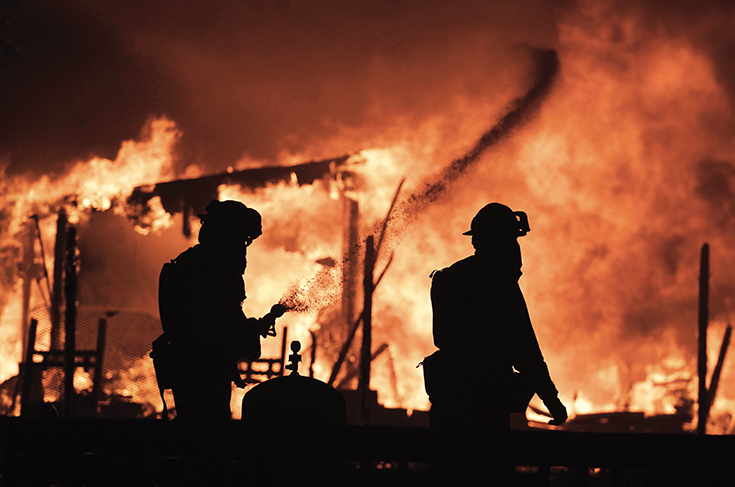
For Irma, USNORTHCOM called on U.S. Marines in the region, Army troops from North Carolina and ships from the Atlantic fleet to provide supplies and serve as floating medical clinics. As U.S. Navy ships delivered food and water to Key West, Marine helicopters evacuated patients from the U.S. Virgin Islands. USNORTHCOM provided aerial and ground reconnaissance and assessment as well. At the peak of relief efforts, the Defense Logistics Agency was supplying 1.2 million meals a day to weary Floridians.
Irma’s signature impact was a damaged power grid. A day after landfall, 7.3 million people were without power across multiple southeastern states, Reuters estimated. USNORTHCOM responded by sending fuel to a National Guard base near Starke, Florida, to help utility crews restore power.
“The team is doing awesome work and is having a direct impact on the relief efforts,” U.S. Air Force Brig. Gen. Martin Chapin, then energy commander of Defense Logistics Agency, said after Irma’s landfall. “Every time a utility truck goes out and power is back on for citizens, it’s because we provided them fuel, and everyone who is supporting this effort should be proud.”
“It has been amazing to see both sides of the evolution of how we, as a federal government, respond to disasters.”
Coast Guard Capt. Scott Langum
With two storms under its belt, USNORTHCOM faced yet another test. Hurricane Maria’s destruction of Puerto Rico was devastating. After the Category 5 hurricane’s September 20, 2017, landfall, 55 percent of the Puerto Rico’s 3.5 million people had no drinking water, and 95 percent of its 1.57 million electricity customers had no power. Areas of the island faced many months without power, said Lt. Gen. Todd T. Semonite, commander of the U.S. Army Corps of Engineers.
In the first days after the storm, lifesaving supplies topped the list for responders. FEMA sent more than 4.4 million meals and 6.5 million liters of water to Puerto Rico by early October. More than 12,600 federal employees from 36 agencies were on the ground in Puerto Rico and the U.S. Virgin Islands, according to FEMA.
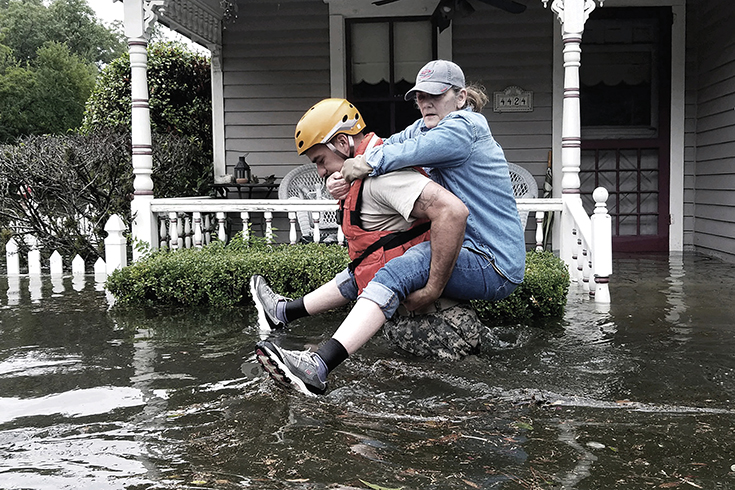
To lead the relief effort, the Pentagon put Lt. Gen. Jeffrey Buchanan in charge of all military hurricane response efforts in Puerto Rico. The command worked with local, state and federal authorities to restore power to hospitals and then gas stations to fuel relief operations and boost daily commerce.
“Everything has been prioritized. We went to hospitals first. Now we’re on gas stations,” then-Acting Homeland Security Secretary Elaine Duke told reporters. “This is a conscious effort to make sure we don’t have loss of life.”
USNORTHCOM strategically located ships to arrive as quickly as possible. Those ships included the USNS Comfort, a medical treatment ship, as well as the USS Kearsarge, USS Oak Hill, USS Wasp and the USNS Supply. The military also sent eight C-17 aircraft. In addition to treating dozens of patients, the USNS Comfort hosted a medical summit with local and federal officials, including Puerto Rico Gov. Ricardo Rossello and U.S. Surgeon General Dr. Jerome Adams, to coordinate humanitarian aid.
Restoring power fell to the Corps of Engineers, which by October 5, 2017, had installed 27 generators at critical facilities. Schools were opened as food distribution centers for residents, and more than U.S. $2.2 billion in grants and low-interest loans were made available to Puerto Rico residents, FEMA reported.
EARTHQUAKES AND WILDFIRES
After already responding to wildfires across the American West and major hurricanes, USNORTHCOM received a call from officials in Mexico City, who were responding to a severe earthquake that toppled buildings, trapped people in the rubble and eventually resulted in 370 deaths.
A U.S. Air Force C-17 flew 60 search-and-rescue experts and their dogs to Mexico City to help locate survivors. The Air Force followed that by sending relief supplies aboard other planes.
“We’re fueled by caffeine and inspired by the actions of others,” Coast Guard Capt. Scott Langum, a future operations director with the command, told The Gazette, a Colorado Springs newspaper. Langum said the intensity and scope of the disasters in 2017 provided USNORTHCOM with unprecedented challenges. “It really isn’t like anything we’ve experienced,” he told the newspaper.
Even before the rain, winds and earthquakes, the year started with devastating wildfires. More than 8 million acres, 500 homes and other structures were burned in the United States, according to the U.S. Fish and Wildlife Service. The bulk of those fires occurred in western states, with California, Montana and Idaho hit the worst.
Civilian resources weren’t enough to contain the blazes, so FEMA asked the Pentagon for help. USNORTHCOM sent C-130 firefighting planes and Soldiers from Fort Lewis near Tacoma, Washington, to support local and state authorities.
Overall, the summer of 2017 proved that USNORTHCOM’s disaster-response skills have matured. During Hurricane Katrina in 2005, Langum piloted a Coast Guard rescue helicopter, The Gazette reported. By 2017, he was helping lead USNORTHCOM’s entire hurricane rescue efforts. “It has been amazing to see both sides of the evolution of how we, as a federal government, respond to disasters,” he said.

